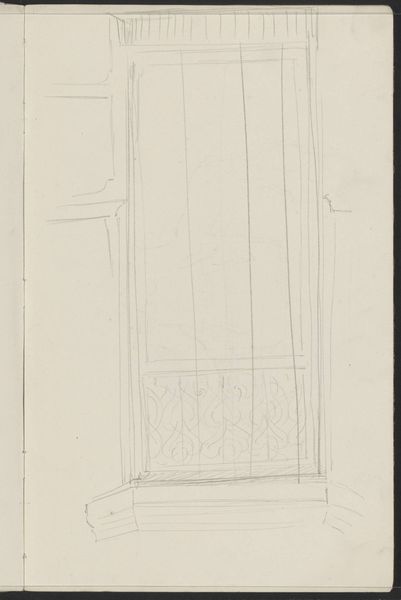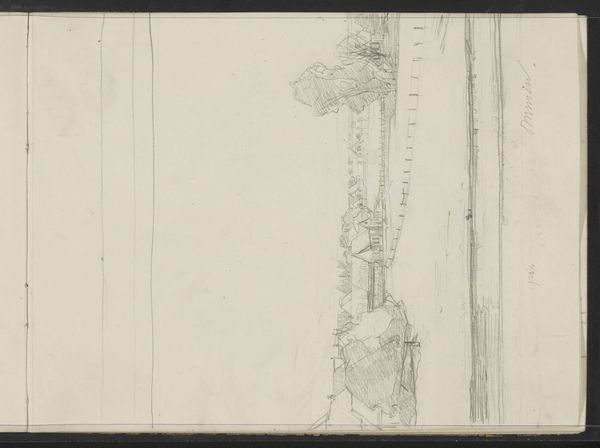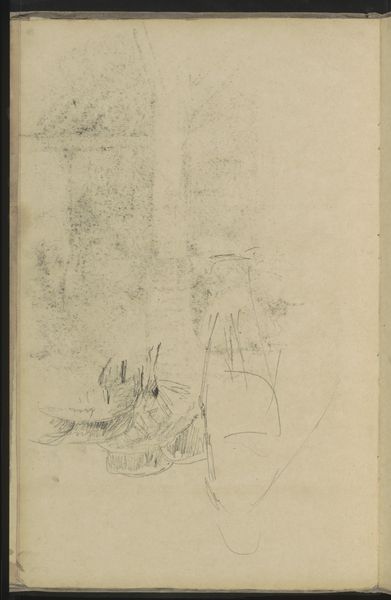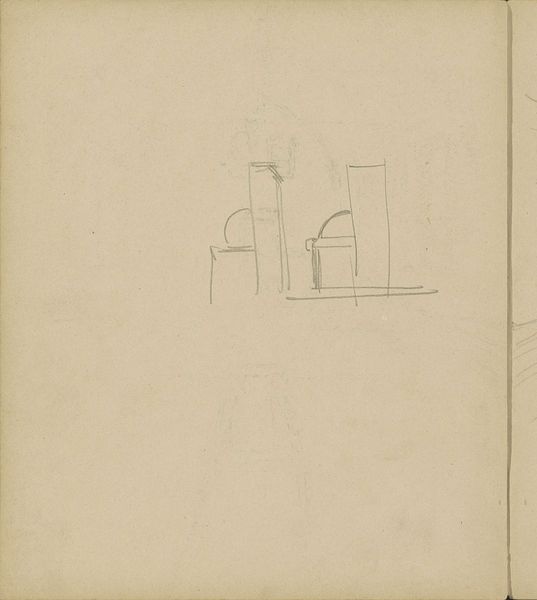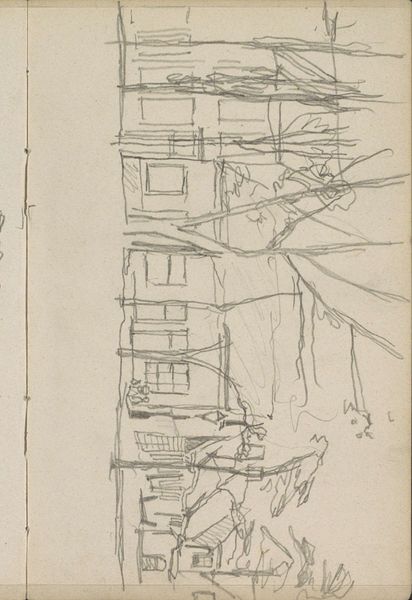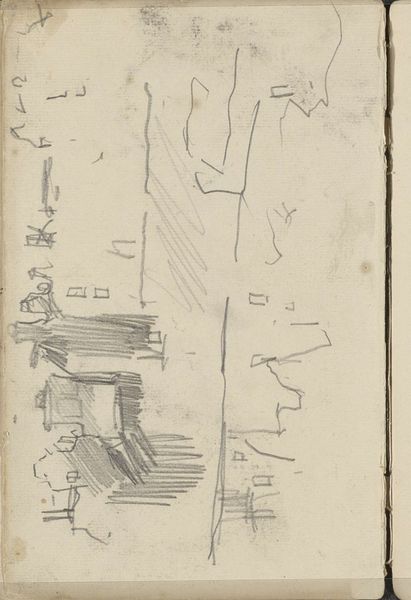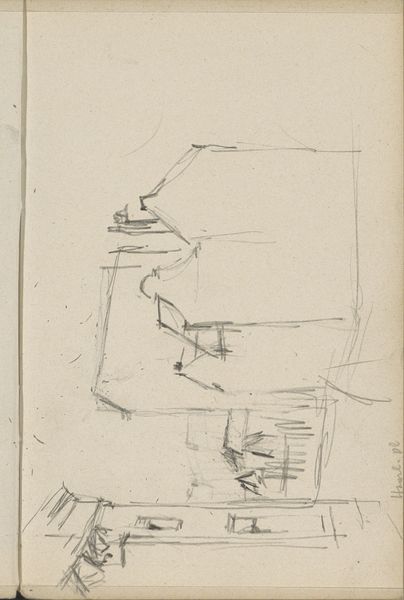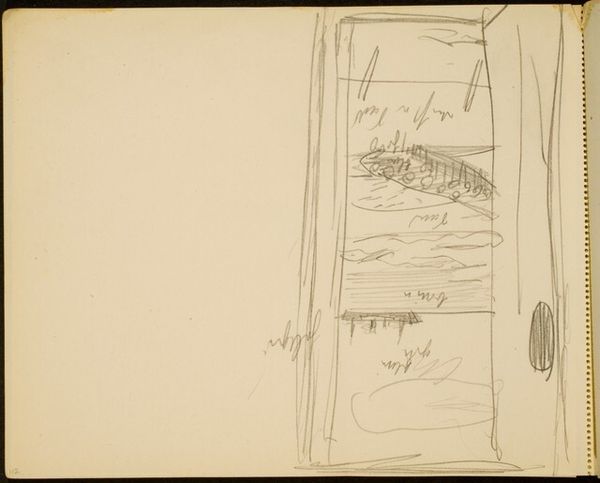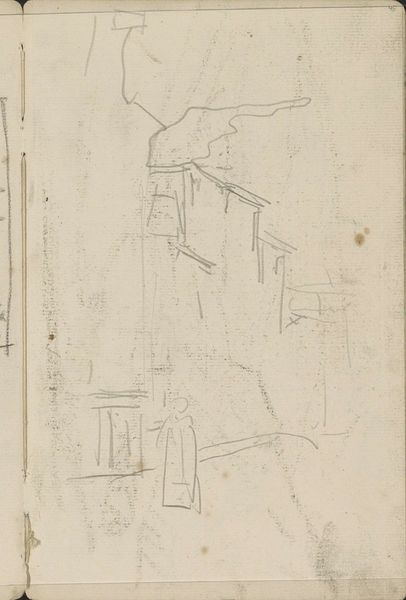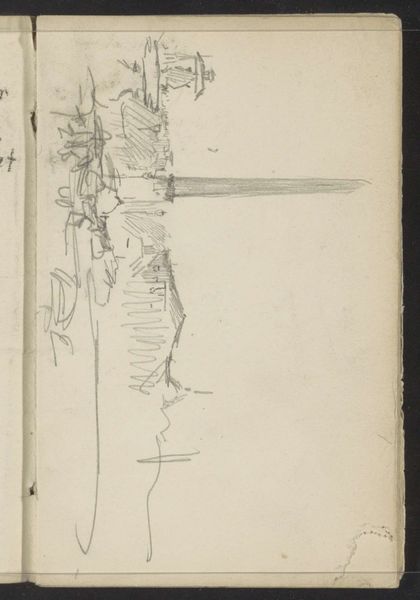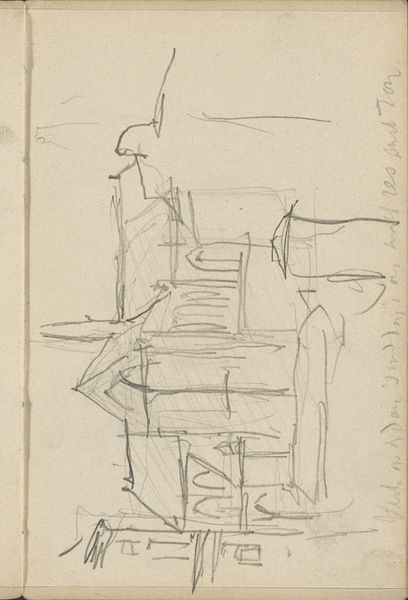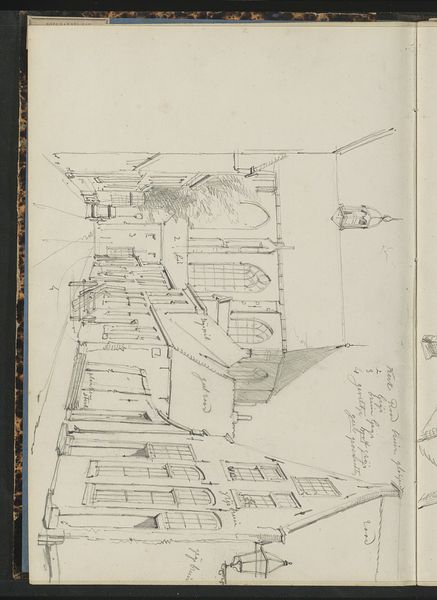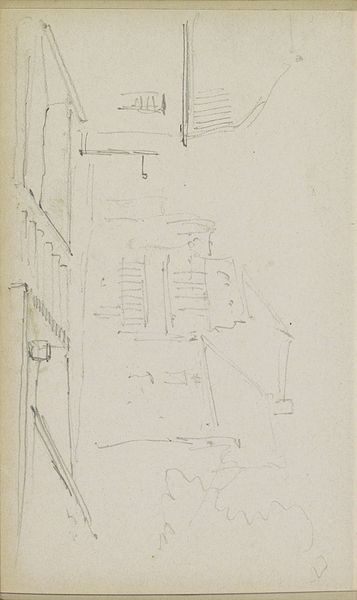
drawing, pencil
#
drawing
#
light pencil work
#
art-nouveau
#
pen sketch
#
pencil
Copyright: Rijks Museum: Open Domain
Editor: Here we have "Ontwerpen voor letters en een hanglamp," or "Designs for Letters and a Hanging Lamp," created around 1903-1904 by Carel Adolph Lion Cachet. It looks to be a pencil drawing, possibly a preparatory sketch? I find it interesting how utilitarian objects, lettering and lamp designs, are presented with an artistic, almost decorative, approach. What catches your eye about this piece? Curator: I see the value in exploring the labor embedded within what you call ‘utilitarian’ design. Lion Cachet was working at a fascinating intersection, when the perceived divide between craft and industry was actively being challenged by movements such as Arts and Crafts. The materials themselves—pencil, paper—speak to accessibility and mass production; paper becomes a ground for innovation before translating the idea into potentially more costly or precious materials. Do you see the interplay of Art Nouveau aesthetics with these burgeoning ideas around industrial design? Editor: Absolutely! I hadn’t considered how the drawing medium itself relates to mass production. And now I do see how those curving, floral motifs associated with Art Nouveau, combined with the sketched letters, soften the rigidity of functional design. It feels like a push and pull between artistry and industrial processes. So how would that impact how it's consumed? Curator: Well, that tension you’ve observed speaks to the consumer’s desire for beauty amidst growing industrialization. Objects were increasingly being mass-produced, and designers like Cachet sought to imbue them with aesthetic value, responding to a perceived spiritual emptiness that mass-produced, strictly utilitarian objects seemed to foster. Where do you see that tension expressed? Editor: In the lamp design. The details are less about pure function and more about ornamentation and artistry. It is the intent of beauty despite an industrial manufacturing capacity that's pretty apparent. This reframing provides insight into social desires during that period. Thank you for bringing all of that to light! Curator: And thank you for your observations about bridging art and function. It’s a reminder of the powerful connections between production, design, and cultural aspirations.
Comments
No comments
Be the first to comment and join the conversation on the ultimate creative platform.

